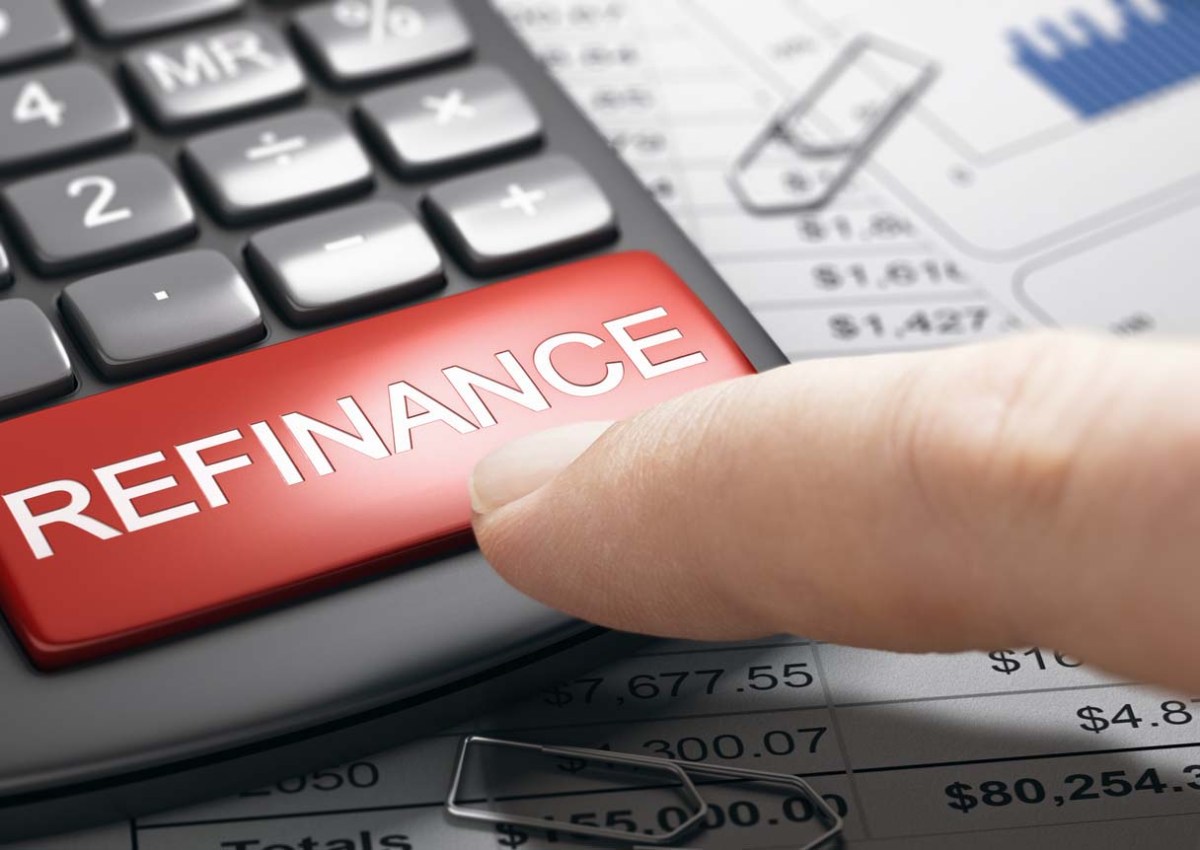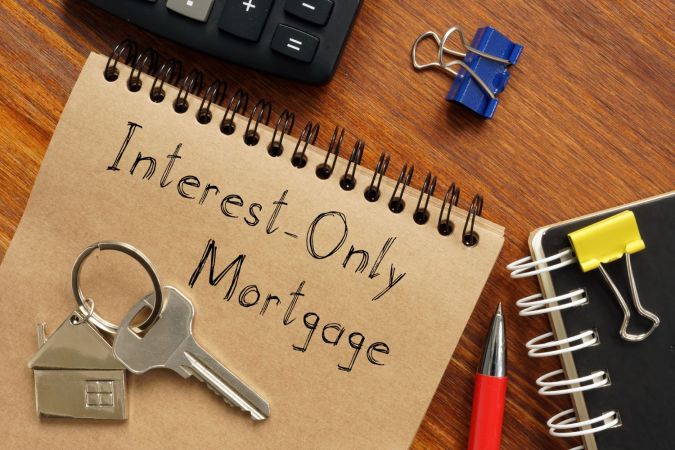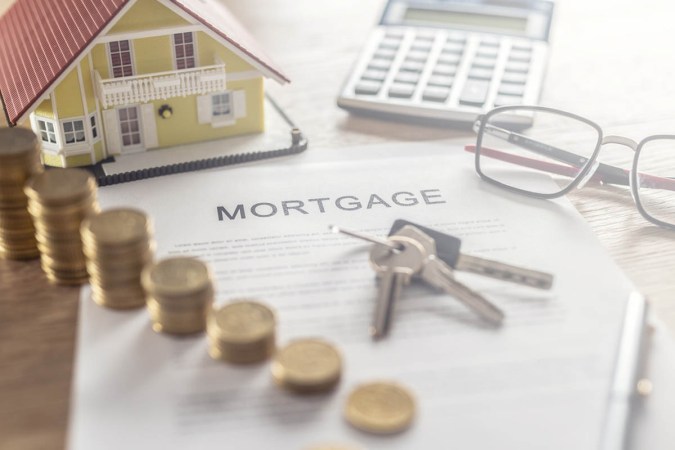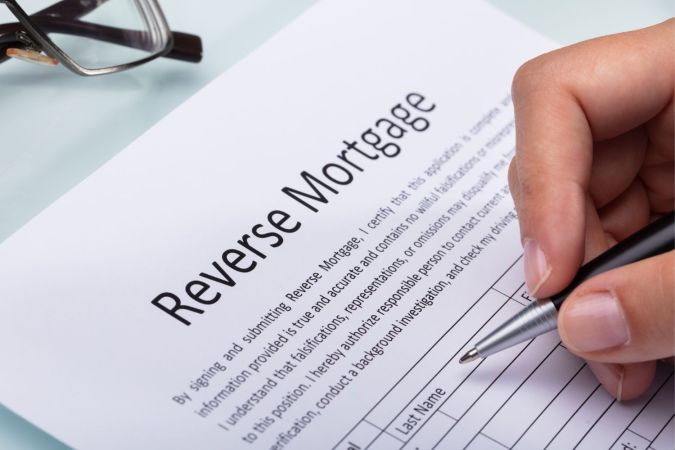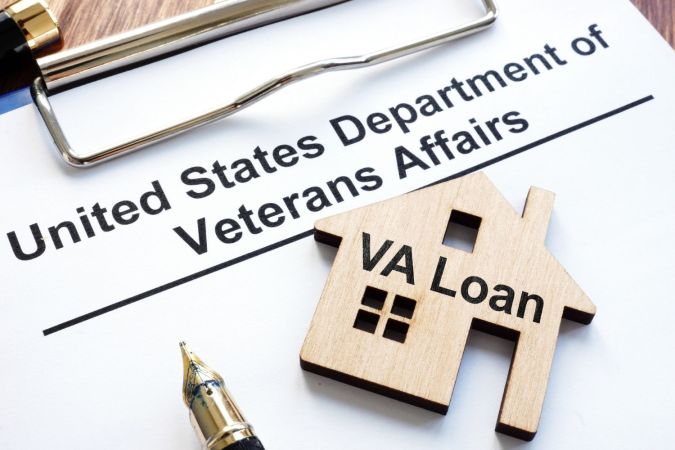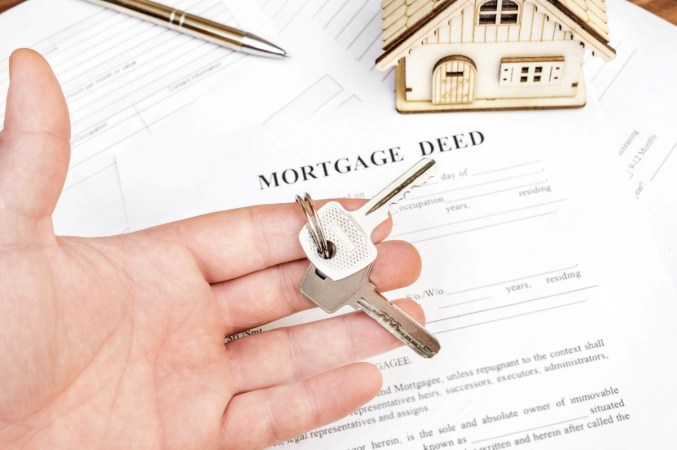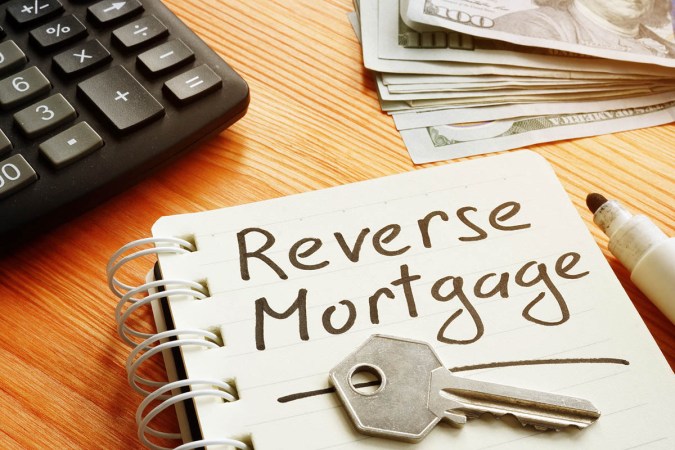We may earn revenue from the products available on this page and participate in affiliate programs. Learn More ›
- Typical Range: 2 to 6 percent of the loan amount
Buying a home is one of the largest expenses many people will take on in their lifetime. Most buyers don’t have the cash to purchase a house outright, which means they need to will turn to mortgage lenders to help finance their home purchase. But since mortgages are long-term loans and interest rates can fluctuate over time, homeowners may find themselves wanting to refinance their current mortgage to take advantage of a lower interest rate or a shorter loan term.
A mortgage refinance is essentially a new loan that replaces the old one. For that reason, the cost to refinance a mortgage can be high, with most homeowners paying between 2 and 6 percent of the total loan amount. That means the actual cost will vary among homeowners, and the higher the loan amount, the more expensive it will be to refinance. This guide will explain the factors that make up the cost to refinance a home, the different types of refinancing options, the reasons for and benefits of refinancing, the various ways borrowers can save, and the questions homeowners will want to ask their lender before refinancing.
Factors in Calculating the Cost to Refinance a Mortgage

How much does it cost to refinance a house? There’s no easy answer because the cost to refinance mortgage loans will be different for every borrower. However, there are certain factors that can help homeowners estimate how much they might pay in order to refinance their loan. These include the size of the loan, the homeowner’s credit score, the amount of equity they have in their home, the type of refinance they choose, the loan term, the refinance fees, and the home’s geographic location.
Loan Size
The size of the loan will have a considerable impact on the total cost of refinancing. Using the typical range of 2 to 6 percent of the loan amount, closing costs for a $250,000 loan will range from $5,000 to $15,000. The cost to refinance a $500,000 loan will be even higher, ranging from $10,000 to $30,000. For many homeowners, that is a significant amount of money, especially considering that the average home loan exceeded $450,000 as of February 2022.
Credit Score
As with any type of loan, customers with “good” or “excellent” credit scores will generally receive more favorable rates than those with “fair” or “poor” credit scores. A borrower with a credit score of at least 740 will typically see the lowest rates and costs to refinance, and customers with lower credit scores may have difficulty finding a lender that will approve their refinance application. For this reason, experts recommend that borrowers with lower credit scores work on improving their financial health before applying for a major loan like a mortgage or a refinance.
Equity
Homeowners can build equity in their homes by making on-time payments for several years, or their home may increase in value and therefore increase their home equity. If the homeowner has enough equity in their home, they may qualify for a cash-out refinance, which puts a lump sum of cash out of the home’s equity into their hands to do with as they please. But on the flip side, taking equity from the home can increase the costs of a refinance because the resulting monthly payment may be higher than the original monthly mortgage payment.
Mortgage Term
The length of the mortgage loan, also known as the mortgage term, can also affect the total costs of refinancing. Homeowners who choose a shorter loan term when they refinance may have higher payments post-refinance than they did with their old loan. For example, a homeowner with a 30-year mortgage who refinances to a 15-year loan will likely have higher payments since they have less overall time to pay off the loan, which will increase the amount of each payment. However, refinancing to a shorter loan term will result in the homeowner paying much less interest on the loan over the life of the loan.
Refinance Type
While homeowners might assume that a mortgage refinance is a straightforward process, there are actually several types of refinancing options to choose from, and each can come with different fees and interest rates. For example, the borrower may be offered a higher interest rate for a cash-out refinance than for a rate-and-term refinance because a cash-out refinance is a riskier type of loan for the lender to take on. Homeowners may also have options for streamline refinancing if their original mortgage loan was guaranteed by the Federal Housing Administration (FHA), the United States Department of Veterans Affairs (VA), or the United States Department of Agriculture (USDA). To determine the best type of refinance for their individual situation, homeowners can speak with their lender.
Origination Fee
Most lenders will charge an origination fee for a mortgage refinance. This fee helps cover the costs of processing, underwriting, and closing the loan. The exact fee can vary, but it typically ranges between 0.5 percent and 1.5 percent of the loan amount. For a $250,000 loan amount, that equals between $1,250 and $3,750 for the origination fee alone; for a $500,000 loan, that range increases to between $2,500 and $7,500. Borrowers may be able to negotiate origination fees with the lender in order to save money on the cost to refinance home loans.
Geographic Location
The geographic location of the home can have an effect on the cost of refinancing a mortgage. That’s because some areas with higher costs of living may have higher third-party fees or taxes, which can in turn increase the overall refinancing cost. Additionally, home prices are higher in some geographic areas, which can translate into higher closing costs on a home refinance.
Additional Costs and Considerations
In addition to the main cost factors, there are some other considerations that may affect the costs to refinance mortgage loans. These costs aren’t always applicable, so homeowners will need to check with their lender to find out which ones they will need to pay. These potential costs include application fees, credit check fees, survey fees, attorney fees, title insurance, flood certification fees, and paying for mortgage points (more on this below).
Application Fees
Depending on the lender, the borrower may be required to pay an application fee when they first apply for loan refinancing. The application fee can vary from lender to lender, and the borrower is usually required to pay the fee even if their application is denied by the lender.
Credit Check Fee
Some lenders will cover the cost of credit checks, but if it falls on the borrower, the cost will likely be between $10 and $100. This allows the lender to check the borrower’s credit score and history to determine whether they are a good risk. The credit check fee may be included in the application fee, though for some lenders, this will be a separate charge.
Appraisal Fee
Before a lender will approve a mortgage refinance application, they will need to determine the current property value. This helps the lender know whether the property’s value is higher or lower than the loan amount being requested. The best home value estimator sites can give homeowners a good starting point to determine what their house is worth, but the lender will require an official appraisal. The appraisal fee will need to be paid by the homeowner, and it will typically cost between $300 and $500 (though the exact amount can depend on the appraiser and the home’s geographic location). Certain types of refinance loans may not require the borrower to pay an appraisal fee, so it’s important for borrowers to ask their lender whether an appraisal is required.
Survey Fee
While a survey is more common when first obtaining a mortgage than it is with a refinance, some lenders may require the borrower to pay a survey fee as part of the loan approval process. A professional surveyor will assess the property to determine its boundaries, easements, and elevation. A survey can cost the borrower between $375 and $745, with the average homeowner paying around $525.
Attorney Fees
Some states require homeowners to utilize the services of an attorney to review and file their loan paperwork. If the borrower lives in a state that requires this, the resulting attorney fees will be added to the total cost of refinancing the mortgage. Attorney fees may be negotiable.
Title Insurance
Purchasing a title insurance policy can help protect the homeowner against any errors on the ownership records. Title insurance is typically calculated as part of the loan’s closing costs. Homeowners pay $1,000 on average for title insurance, but they may be able to save money by sticking with the same title insurance company that they used for their original mortgage.
Flood Certification
Depending on the home’s location, homeowners may be required to pay a flood certification fee. This fee pays for a document that states whether or not the property is located within a designated flood zone. For properties within a flood zone, the homeowner will be required to purchase a flood insurance policy through the National Flood Insurance Program. Flood certification fees typically run between $15 and $25.
Mortgage Points
If available, mortgage points can help the borrower get a reduced interest rate and therefore lower the overall cost to refinance a house. In general, each mortgage point equals 1 percent of the loan amount, and the more points the borrower buys, the lower their interest rate. For every mortgage point purchased, the borrower’s interest rate will fall by around 0.25 percent. Purchasing mortgage points increases the total closing cost amount but will decrease the loan’s interest rate, which can save the homeowner money over the term of the loan.

Types of Mortgage Refinances
There are several different mortgage refinancing options that borrowers can choose from: a cash-out refinance, a cash-in refinance, a rate-and-term refinance, a streamline refinance, a reverse mortgage, a no-closing-cost refinance, and a short refinance.
Cash-Out Refinance
A cash-out refinance is a common way for homeowners to tap into their home’s equity to pay for things like home improvements, unexpected medical bills, debt consolidation, or a child’s college tuition. When refinancing their mortgage with a cash-out option, the homeowner will take out a loan for a larger amount than they currently owe, and once the original mortgage is paid off they’ll receive the remaining amount in a lump-sum cash payout. The money is then the homeowner’s to do with what they please. The homeowner will have a new mortgage payment that includes the amount owed on the loan and the amount taken out of the home’s equity in cash.
Depending on the amount of equity taken out of the home, the borrower may end up with a larger mortgage payment than they had previously, so it’s important for them to carefully check their budget to make sure this is an expense they can take on. Defaulting on a cash-out refinance could result in the borrower losing their home, so they will want to do careful research before signing the paperwork. Homeowners can compare a cash-out refinance vs. a home equity loan to determine the best way to tap into their equity.
Cash-In Refinance
When a homeowner chooses a cash-in refinance, they will put down a lump sum of money at closing, similar to a down payment when first purchasing a home. This can help lower the total loan amount, which can in turn mean lower monthly payments. Putting a lump sum of cash into the home during a refinance can help homeowners whose mortgage amount is higher than their home’s current value; in industry terms, this means they are underwater on their mortgage.
Rate-and-Term Refinance
A rate-and-term refinance is designed for borrowers looking to reduce their monthly payments or choose a shorter mortgage term. It’s common for homeowners to refinance their mortgage this way when current interest rates are lower than the interest rate the homeowner is presently paying on their mortgage. Interest rates fluctuate over time for many reasons, and when they are low, lenders tend to see an increase in borrowers refinancing their loans.
Homeowners may also choose this type of refinance if they want to change from a 30-year loan term to a 15-year one. A shorter loan term means less overall interest paid by the time the loan matures, which could save homeowners thousands of dollars over time. This may be an option for a homeowner whose income has increased since taking out the initial loan since they can now afford to make larger monthly payments on their mortgage. On the flip side, a homeowner could refinance from a 15-year mortgage to a 30-year mortgage in order to lower their monthly payments if they’re facing financial hardship.
FHA Streamline Refinance
Homeowners who currently have a mortgage loan from the FHA can opt for an FHA Streamline refinance, which can get them a lower interest rate on their loan; this translates into lower monthly payments. There are some rules around this type of refinance, including homeowners not being able to add more than 12 years to their loan term when refinancing.
There are two main types of FHA Streamline refinances: Credit-qualifying and non-credit-qualifying. A credit-qualifying FHA Streamline refinance requires the borrower to provide proof of income to the lender, and the lender to perform a credit check. This type of refinance is common for homeowners who want to remove a borrower from their mortgage following a major life change such as a divorce. For a non-credit-qualifying FHA Streamline refinance, the lender will still check the borrower’s credit but won’t consider as many factors. In this type of refinance, the borrower typically won’t need to provide proof of income, either. FHA Streamline refinances generally don’t require the homeowner to get an appraisal since the loan amount is based on what the homeowner owes rather than the current market value of the home.
VA Streamline Refinance
Active-duty military members and veterans who have VA loans can choose a VA Interest Rate Reduction Refinance Loan (IRRRL), also known as a VA Streamline refinance. The VA will offer this type of refinance only if it will provide a financial benefit to the borrower, such as a lower interest rate or lower monthly payment. Borrowers who want to refinance because they don’t like their current lender or because they want to tap into their equity will need to choose a different type of mortgage refinance.
USDA Streamline Refinance
The USDA offers home loans to borrowers in rural and some suburban areas. Homeowners who have a USDA loan can choose to refinance using a USDA Streamline. This type of refinance allows homeowners to refinance at a lower interest rate or longer term in order to decrease their monthly payments. Unlike other types of mortgage refinances, a USDA Streamline doesn’t require borrowers to have a certain amount of home equity or to get an appraisal or inspection, which can save money.
There are two types of USDA Streamline refinances: Standard and Streamline-Assist. For a Standard USDA Streamline refinance, homeowners must provide proof of income, have a USDA-qualifying debt-to-income (DTI) ratio, and must have made payments on time for the last 6 months. A Streamline-Assist refinance removes the DTI ratio requirement and the credit check from the process, but the new monthly mortgage payment must be at least $50 less than the original payment in order for the homeowner to qualify.
Reverse Mortgage
Homeowners may not consider a reverse mortgage a type of refinance, but it technically is. This type of refinance is generally available to homeowners over the age of 62 who have a certain amount of home equity. With a reverse mortgage, the lender will make payments to the homeowner, either in a lump sum or via monthly installments, that don’t need to be repaid until the home is sold. During the term of a reverse mortgage, the homeowner must maintain the home and continue paying taxes and insurance, but there is no mortgage payment for the homeowner to make.
No-Closing-Cost Refinance
Closing costs can be high, and many homeowners may not be able to afford to pay them during a mortgage refinance. For those homeowners, a no-closing-cost refinance may be the best option. Instead of the homeowner paying closing costs when the refinance is finalized, the costs will be replaced by a higher interest rate or simply rolled into the total loan balance.
Short Refinance
Homeowners who are having trouble making mortgage payments and are at risk of defaulting on their loan may be able to take advantage of a short refinance. This type of refinance replaces the current loan with a new one that has a lower balance, which results in lower payments for the homeowner. Since the lender can lose a lot of money if the property goes into foreclosure, a short refinance can help reduce the lender’s losses. However, the lender must approve this type of refinance, and it may have a negative effect on the borrower’s credit score.

Do I Need to Refinance My Mortgage?
Homeowners may wonder, “When should I refinance my mortgage?” There are many scenarios when a homeowner may choose to refinance their mortgage. These include getting rid of mortgage insurance, converting their current loan to a different type of loan, removing a borrower from the loan, or accessing their home equity to pay for an unexpected bill.
Eliminate Mortgage Insurance
Homeowners who put down less than 20 percent on a conventional mortgage are typically required to pay private mortgage insurance, or PMI. Once the homeowner reaches 20 percent equity, they can request to have their PMI removed from their loan. However, if the home’s value increases dramatically, the homeowner may want to refinance their mortgage sooner if the increase means they now have 20 percent or more equity in the home.
Convert Loan Types
Some types of loans, such as FHA loans, require the borrower to pay a mortgage insurance premium, or MIP, for the life of the loan. If the homeowner’s financial situation improves enough to make them eligible for a conventional loan, they may want to refinance in order to drop the MIP payment from their loan. Similarly, a homeowner with an adjustable-rate mortgage may want to refinance to a fixed-rate mortgage to lock in a lower interest rate and have steady mortgage payments for the life of the loan rather than fluctuating payments after the initial loan period.
Remove a Borrower
After a separation or divorce, a homeowner may need to refinance their mortgage to remove their ex-partner from the loan. This can happen after the division of assets if one partner is granted full ownership of the home. In order to qualify, the partner who is remaining on the loan must qualify for the new loan using their income and assets, including any alimony or child support payments. The homeowner may also consider a cash-out refinance as a way to split assets with their ex-partner.
Access Home Equity
Homeowners may want to refinance their mortgage in order to access their home equity if they are hit with an unexpected bill. For example, a serious health diagnosis or accident could result in extremely high medical bills that the homeowner is unable to pay. Homeowners can choose a cash-out refinance to access their home equity and help pay down those bills to avoid defaulting and having them sent to collections.
Benefits of Mortgage Refinancing
Homeowners may be wondering, “Should I refinance my mortgage?” There are several benefits of refinancing a mortgage. Homeowners can take advantage of lower interest rates, a shorter loan term, or the opportunity to pay off high-interest debt.
Decreased Interest Rate
Interest rates fluctuate over time, and homeowners may be able to lock in a lower rate by refinancing their mortgage. A lower interest rate means less overall interest paid over the life of the loan, and a lower monthly payment. That can allow homeowners to put more money toward their retirement, their emergency savings, or even their dream vacation.
Shorter or Longer Loan Term
Many homeowners refinance their mortgage to change the loan term. A shorter loan term means that the mortgage will be paid off sooner, and the homeowner will end up paying less in interest by the time the loan matures. Conversely, a longer loan term can help reduce monthly payments, which can be helpful for homeowners who are struggling to pay their mortgage.
High-Interest Debt Consolidation
A cash-out refinance provides the homeowner with a lump sum of cash from their home’s equity. This cash can be used to pay off or consolidate high-interest debt such as credit cards or personal loans, which can in turn help the homeowner get out of debt faster.
How to Save Money on the Cost to Refinance
Refinancing can be expensive since most types of mortgage refinance require the borrower to pay closing costs between 2 and 6 percent of the total loan amount. However, there are some ways you can save money on the cost of refinance, including the following.
- Negotiate lender fees. Ask your lender whether their refinancing fees are negotiable. Some examples of potentially negotiable fees include application, origination, and underwriting fees.
- Boost your credit score. While improving credit scores can take some time, it can be worth it if you are able to get a better rate with a higher credit score. Work on paying your bills on time and paying down your high-interest debt.
- Ask about mortgage points. Some lenders may allow you to pay mortgage points, which can help decrease the interest rate on the loan. In general, each point is worth 1 percent of the loan amount and decreases the interest rate by 0.25 percent.
- Use the same title insurance company. This can help you save up to 40 percent on title fees.
- Shop around. Different lenders may offer different interest rates and loan terms. Request quotes from several different lenders to find the best offer for you, and then apply with your chosen lender.
- Consider a streamline refinance. If you have an FHA, VA, or USDA loan, you may qualify for a streamline refinance, which can help you avoid paying some fees.

Questions to Ask About Refinancing
Refinancing a mortgage is a huge financial decision, and one which homeowners should not enter into lightly. Before deciding which type of refinance to choose, homeowners may want to ask their lender the following questions.
- What types of refinancing options do you offer?
- Which refinancing option is best for me?
- What are the qualification requirements to refinance my mortgage?
- What is the difference between interest rate and APR?
- Do you offer rate locks?
- Will refinancing decrease my monthly mortgage payments?
- Will you service my loan after closing, or will you sell it?
- How much money can I get from my home’s equity if I choose a cash-out refinance?
- What are the closing costs I will need to pay?
- What is a closing disclosure?
FAQs
Refinancing a mortgage can come with many questions, especially for homeowners who don’t fully understand the process. The following are some of the most common questions about mortgage refinancing that homeowners may have.
Q. How does refinancing work?
Refinancing a mortgage is essentially taking the current loan and replacing it with a new one that has a lower interest rate or a different term. Homeowners interested in refinancing will need to determine the best type of refinance for them, apply with their chosen lender, and pay closing costs on the loan. Once the refinance is complete, the homeowner’s old loan will be paid off and they will have a new monthly mortgage payment. For more information on how to refinance a mortgage, homeowners can contact their lenders.
Q. Why does refinancing cost so much?
The costs to refinance a mortgage can be quite high, especially for properties with large loans. This is because a refinance is a brand-new loan that replaces the original mortgage. Just like with the initial mortgage, the borrower must go through an application process that includes a credit and income check, an appraisal, and new title work. This means that the cost for refinancing a mortgage may end up being similar to the cost to purchase a new home.
Q. What costs should I account for when refinancing my mortgage?
In general, it costs between 2 and 6 percent of the loan amount to refinance a mortgage. This cost is made up of several factors, including application fees, appraisal fees, attorney fees, origination fees, and title fees. Borrowers can contact their lender directly to determine the exact costs that they will need to account for when it comes to refinancing their mortgage.
Q. How much does it cost to refinance my mortgage?
The average cost to refinance a mortgage is between 2 and 6 percent of the total loan amount. That means the total cost will be dependent on the amount of the mortgage; for example, the cost to refinance a $200,000 mortgage may be between $4,000 and $12,000, while homeowners who have a $500,000 mortgage will pay between $10,000 and $30,000 to refinance.
Q. When is refinancing a bad idea?
While refinancing is a good option for many homeowners, it can also be a bad option for some. The following are some examples of when refinancing may not be the best idea.
- The homeowner plans on moving soon and will not recoup the cost to refinance their loan.
- The homeowner doesn’t have enough equity in their home to avoid PMI.
- The homeowner’s credit score is lower than 620, or the homeowner has a debt-to-income ratio below 45 percent.
- Refinancing will not result in the homeowner having a lower interest rate or lower monthly payment.
Q. How can I lower the cost of refinancing?
There are several ways that homeowners can lower the cost of refinancing their home. These include improving their credit scores, negotiating fees with their lender, shopping around with several lenders, purchasing mortgage points, opting for a streamline refinance, and using the same title insurance company as they did for the initial mortgage.
Sources: Forbes, Credible, Rocket Mortgage, LendingTree, HomeAdvisor, CNBC

